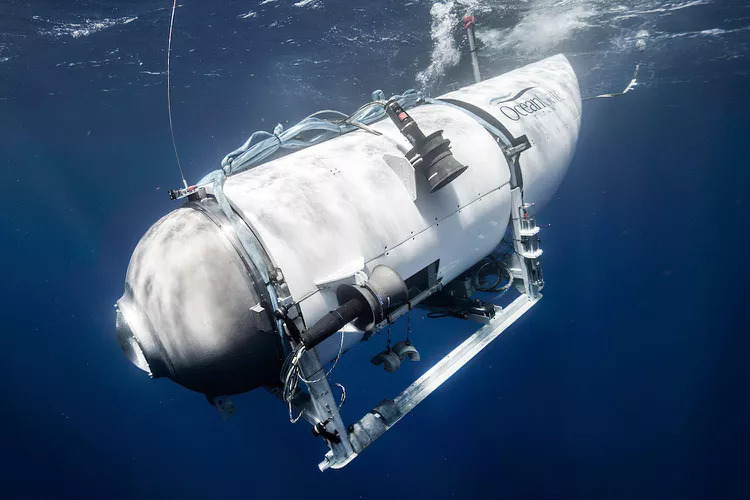Debris Unveils Grim Fate of OceanGate’s ‘Titan’ Submersible Passengers

In a devastating turn of events, the 22-foot submersible Titan has gone missing while on an exploration mission at the site of the Titanic wreckage. With five people aboard and their oxygen supply running low, a frantic search of the vast seafloor, equivalent to the size of Massachusetts, was launched by authorities. Utilizing advanced sonar technology and microphones to listen for any signs, rescue ships were determined to locate the submersible.
US Coast Guard Discovers Titanic Wreckage 1,600 Feet from Bow
The news from the United States Coast Guard now reveals that the wreckage has been found by a remotely operated vehicle (ROV) approximately 1,600 feet away from the bow of the Titanic. Resting at a staggering depth of 12,500 feet, Rear Admiral John Mauger, speaking at a press conference held in Boston, stated that “the debris is consistent with the catastrophic loss of the pressure chamber.” The initial discovery included the vessel’s nose cone, followed by a significant debris field containing the front end bell of the pressure hull, which led Paul Hankins, supervisor of salvage for the US Navy, to conclude that a catastrophic event had taken place. Subsequently, the ROVs located another debris field containing the other end of the pressure hull.
OceanGate Confirms Loss
OceanGate, the operator of the submersible, released a statement confirming the loss and expressing deep sorrow. They acknowledged the dedicated employees who are both physically exhausted and profoundly grieving over this tragedy. The OceanGate family extended their heartfelt gratitude to all those who contributed resources and worked tirelessly on the mission.
Although evidence points towards implosion as the cause of Titan’s demise, authorities are unable to determine precisely when it occurred. Admiral Mauger added that sonar-equipped buoys had been actively monitoring the Titanic wreck for 72 hours before the discovery but had not detected any signs of implosion, suggesting it had happened earlier. Dale Mole, a former US Navy physician, explained that at such extreme depths (with a pressure of 5,500 pounds per square inch), death would have been instantaneous, leaving no chance for survival.
Fatigue and Material Compromise
Jules Jaffe, a research oceanographer at the Scripps Institution of Oceanography, speculates that fatigue may have played a role in Titan’s destruction. He suggests that after multiple dives, material strength could have become compromised, particularly in joints rather than the actual surfaces.
The Marine Technology Society database, last updated in 2020, lists a total of 38 manned underwater vehicles worldwide. Among this limited group, Titan stood out as an outlier capable of descending to an impressive depth of 13,120 feet. Most submersibles used for tourism do not fall under the category of “manned underwater vehicles” as they typically operate at depths of only around 150 feet, as explained by William Kohnen, a member of the Marine Technology Society.
Prior to the recent tragedy, concerns had been raised by experts about OceanGate deviating from conventional safety procedures. In 2018, members of the Marine Technology Society expressed their “apprehension” regarding OceanGate’s “experimental approach.” It remains unclear whether OceanGate addressed these concerns.
Uncertain Future for Submersible Tourism
Reflecting on this tragic incident, the Marine Technology Society posted a statement on their website emphasizing their fifty-year safety record without any previous incidents. They credited the success of the industry to the engineering discipline and professional approach of its members. With this previously untarnished safety record now shattered, the future of submersible tourism hangs in uncertainty. However, Jules Jaffe believes that the pursuit of exploration will persist due to oceanographers gathering invaluable data from the depths of the seafloor, stating, “We got over [the Challenger disaster] and built spacecraft that didn’t.”






